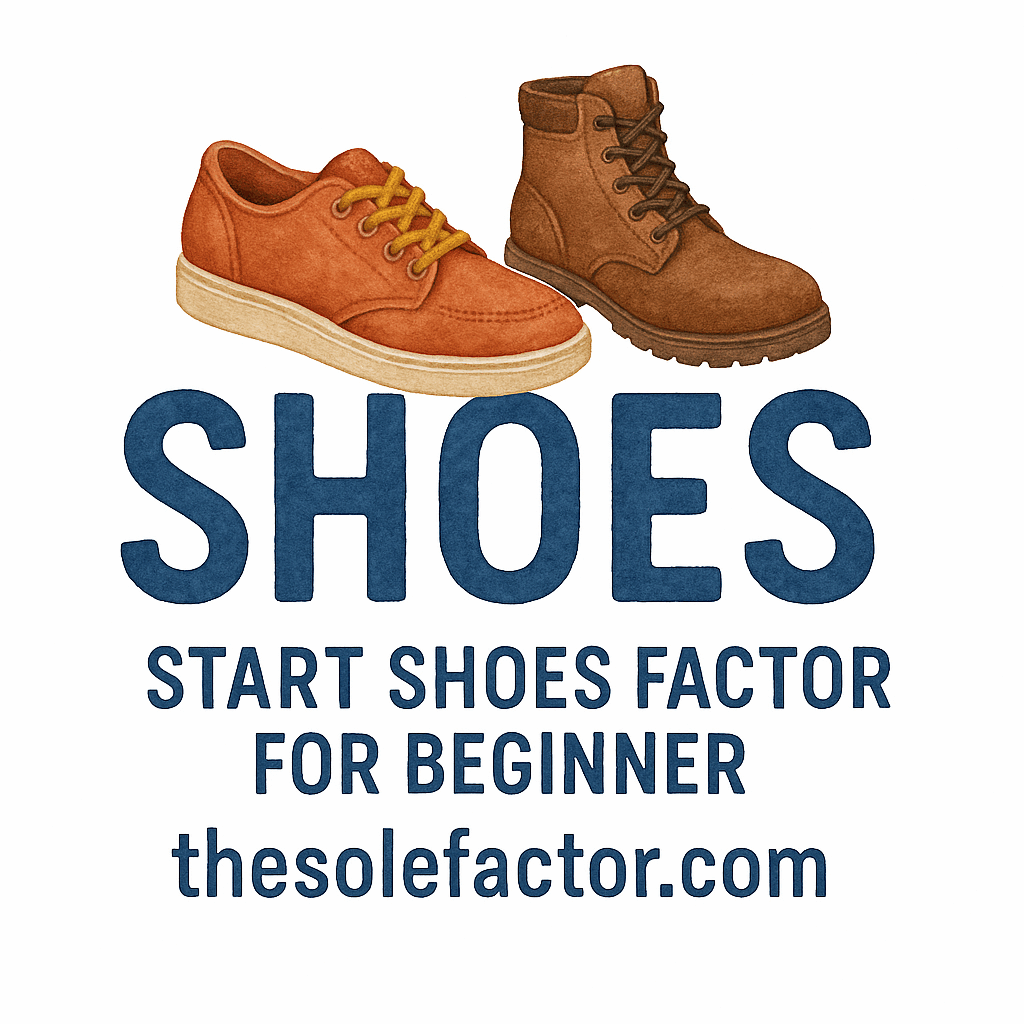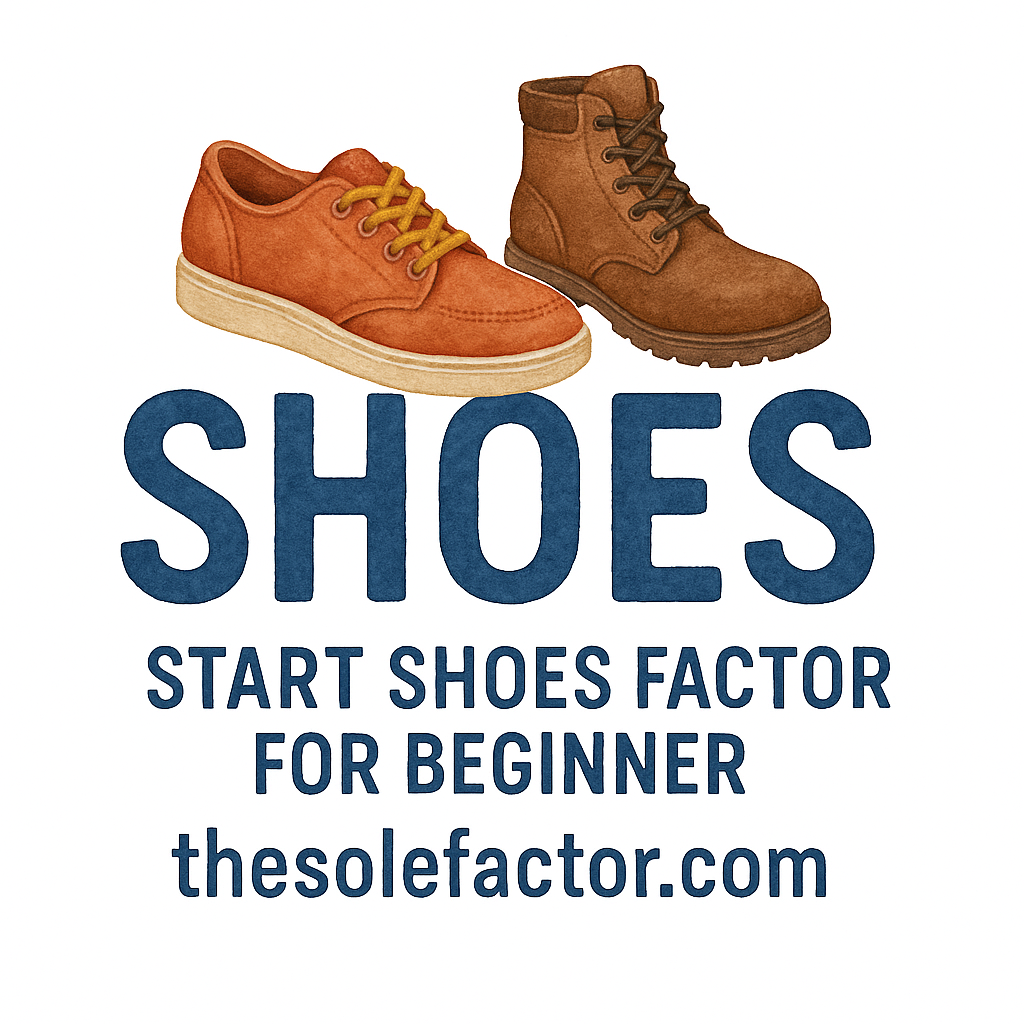Starting a shoe factory is an exciting venture, but many beginners unknowingly make critical mistakes that can affect the long-term success of their business. Whether it’s poor financial management, ignoring market research, or neglecting proper branding, these errors can lead to costly consequences. If you’re planning to start a shoe factory, understanding these common mistakes will help you avoid them and pave the way for success.
Introduction
Starting a shoes factory isn’t just about having a great idea or capital—it requires careful planning, strategic financial management, knowledge of industry trends, and a strong marketing strategy. Unfortunately, many entrepreneurs overlook these factors, which can result in missteps that are hard to recover from. In this article, we’ll explore the five most common mistakes beginners make when starting a shoe factory and offer tips on how to avoid them.
Mistake #1: Lack of Proper Planning
The Importance of Strategic Planning
Planning is crucial for any successful business, especially when setting up a shoe factory. Without a clear roadmap, you risk making decisions based on guesswork, which can lead to inefficiency, wasted resources, and missed opportunities. Before you even think about raw materials or production lines, ensure you have a detailed business plan that outlines everything from your goals to your target market.
A solid plan helps you avoid common pitfalls like mismanaging your finances or choosing the wrong equipment. Be sure to think long-term and account for future scaling and expansion needs. Not sure where to start? You can find helpful advice on factory planning on operations and finance for shoe factories.
Common Planning Pitfalls
It’s easy to overlook the importance of detailed planning in the excitement of starting a new business. But rushing through the planning process can be detrimental. Many beginners skip over crucial elements, such as market analysis and resource allocation, which leads to bad decisions. A lack of a clear plan can also result in hasty investments in equipment or marketing strategies that don’t align with your business goals.
If you’re unsure about how to start planning, make sure to get in touch with industry experts or visit existing shoes factories to learn from their experiences.
Mistake #2: Poor Financial Management
Budgeting and Financing Your Factory
Financial mismanagement is a leading cause of failure in new businesses. A shoes factory requires significant capital to get off the ground, from acquiring equipment to paying for raw materials, labor, and operational costs. Many beginners fail to properly budget for these expenses and underestimate the capital needed to keep the business running smoothly.
It’s crucial to establish a solid financial strategy before diving into production. You’ll need to understand your fixed and variable costs and secure adequate financing through loans or investors to cover these expenses. To get a better idea of how to approach your finances, read more on marketing and branding strategies.
The Dangers of Underestimating Costs
One of the most common mistakes is underestimating the true cost of running a shoe factory. You might think you’ve accounted for everything, but unforeseen expenses such as equipment maintenance, transportation, and labor costs can quickly add up. A lack of funds can cause delays or force you to cut corners on quality.
Don’t make this mistake—always have a contingency plan and budget extra funds for unexpected costs. For insights into budgeting, explore shoe factory budgeting tips.
Mistake #3: Ignoring Market Research
Knowing Your Customer
The key to running a successful shoe factory is understanding your target market. Many beginners make the mistake of assuming they know what customers want without conducting sufficient market research. This often results in shoes that don’t sell or don’t align with consumer preferences.
Market research allows you to identify your potential customers, understand their needs, and gauge what price points they’re willing to pay. Without it, you’re guessing, and that’s a risky approach. For guidance on how to conduct market research, visit branding and market analysis.
Product Design and Trends
Staying updated with the latest design trends is essential in the fast-paced shoe industry. Beginners who fail to research the current market trends often create products that fall flat with consumers. To prevent this, invest time and resources in understanding what’s trending in footwear design, materials, and color palettes. If you want to dive deeper into design trends, check out shoe design trends.
Incorporating popular trends while maintaining your brand’s unique identity is the sweet spot. Neglecting market trends can result in low demand for your products, hurting your sales and brand reputation.

Mistake #4: Underestimating Manufacturing Needs
Production Equipment
A key element of any successful shoe factory is investing in the right production equipment. Unfortunately, beginners often underestimate the importance of quality machinery in ensuring efficiency and minimizing waste. Whether it’s stitching machines, cutting equipment, or molding tools, each piece of equipment plays a crucial role in the production process.
Before buying equipment, do thorough research on the different types of machines available for shoe manufacturing and how they align with your production goals. For expert advice on selecting the right tools, explore production equipment.
Choosing the Right Factory Location
Location matters more than you might think when starting a shoe factory. Beginners sometimes overlook the strategic importance of a factory’s location, which can greatly impact operational efficiency, cost control, and accessibility to suppliers. If your factory is located far from transportation hubs, raw materials might become more expensive and logistics more difficult.
Carefully evaluate various locations based on proximity to suppliers, the cost of utilities, and labor availability. A location that is close to your target market could also provide logistical advantages for distribution.
For more on factory setup and location planning, visit shoe factory basics.
Mistake #5: Neglecting Branding and Marketing
Building a Strong Brand Identity
Many beginners focus so much on production that they forget to build a strong brand identity. This is a huge mistake, as branding is a critical factor in attracting customers and building long-term loyalty. Your brand should communicate the quality, uniqueness, and values of your products.
Take the time to develop a clear and cohesive brand message that resonates with your target audience. Consider creating a visual identity (logo, packaging, website) and a mission statement that reflects your factory’s core values. For a deep dive into building a brand, check out shoe factory branding tips.
Marketing Strategies for Shoe Factories
Creating great shoes is one thing, but getting them noticed by potential customers is another. Marketing is essential to ensure your factory’s products reach the right audience. Digital marketing, influencer collaborations, and social media advertising are all effective ways to spread the word.
Be sure to allocate a portion of your budget to marketing and develop a strategy that includes both online and offline channels. To learn more about effective shoe factory promotion, visit shoe factory promotion.
Conclusion
Starting a shoe factory requires a lot of careful planning, financial management, and attention to market trends. By avoiding these five common mistakes, you can ensure that your business is set up for success from day one. Remember, the key to success in the shoe industry lies in smart planning, understanding your customers, investing in the right equipment, and building a solid brand presence.
Starting a shoe factory is an exciting journey, but it’s important to stay informed, adapt to changes, and continuously improve your processes. Take your time, learn from others, and be prepared for challenges along the way.
FAQs
- What equipment do I need to start a shoe factory?
The essential equipment includes cutting machines, stitching machines, and molding machines, all of which play a critical role in efficient shoe production. - How can I set the right price for my shoes?
Research similar products on the market and use that information to set a competitive price that also ensures profitability. - Is a physical store necessary for a shoe brand?
While many brands succeed online, a physical store can increase visibility and provide customers with a better shopping experience. - How much money do I need to start a shoe factory?
The capital required varies based on the scale of the operation, equipment costs, and location. It’s essential to budget thoroughly for all expenses. - What marketing strategies work for shoe factories?
Utilize digital marketing, collaborate with influencers, and use social media to promote your shoe products and connect with potential customers. - How do I choose the best location for my shoe factory?
Consider factors like proximity to suppliers, labor availability, transportation, and utility costs when selecting a location for your factory. - What are the current trends in shoe design?
Sustainability, comfort, and unique designs are major trends shaping the footwear industry. Stay updated with industry reports to understand consumer preferences.


